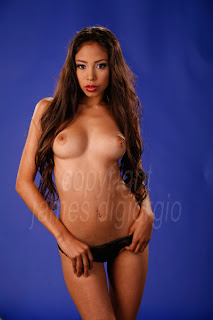
Aside from a large amount of career history as a videographer and photographer, I've spent significant time working as an editor. I'm not talking about newspapers or books, I'm talking about video editing.
When digital NLEs (Non-Linear Editors) came into being, I knew the future of editing, whether for TV, films, whatever, would never be the same. Analog linear (video) editing systems, as well as Moviolas and flat-beds for film, would go the way of the dinosaurs. It ain't that I was some kind of Nostradamus-like seer or exceptionally smart dude or a technological savant-- if you had ever cut stuff the old way, and then began cutting it the new way, that particular bit of prognostication was a no-brainer.
The first non-linear system I learned to cut on was called
D-Vision. That was back in the early nineties. A few years later I learned to cut on an AVID and, soon thereafter, I purchased an AVID Media Composer of my own. (To the tune of about $90,000.) Back then, AVID pretty much owned the digital NLE business. Today, though, it seems that "Final Cut Pro" is the dNLE of choice. And a nicely configured Final Cut Pro editing system costs significantly less than my AVID Media Composer did... way WAY less!
Whenever I was logging & digitizing or cutting picture and sound, the five words I hated most to hear were, "We'll fix it in post." What those words really meant was, "We screwed up," or, "We don't have time to do it right," and the
We in
We'll fix it in post didn't refer to anyone on the production set, it referred to your's truly.
Thanks, guys. Nothing I loved more than fixing your screw-ups. After all, I had nothing better to do while trying to make your latest and greatest viewable. It was so much fun spending all that time trying to frost your turds. Hearing you unashamedly announce, on the production sound, that I'd be fixing your eff-ups because you were unable to get it right or didn't want to spend the time getting it right was a real bonus.
What's all this have to do with photography? Plenty. Way too many shooters snap merrily along with a "fix it in post" attitude. They shoot with an over-reliance on raw converters and image processors to fix things that should not have needed much fixing, i.e., that could have been shot correctly in production. These days, it seems, there's less photographers in spite of there being more people with cameras in their hands claiming "photographer" status. Instead, there seems to be more SPIMs. (Shutter-clicking Post-production Image Manipulators.)
Sure, it's nice to know there are tools a shooter can use to fix mistakes. And we all make mistakes but, in general, it's my opinion that those tools serve you better when they're called upon to enhance images rather than to fix them. You might not be able to do much about that unsightly blemish the model is sporting other than a quick fix in Photoshop but, while in production, you certainly have control over lighting and exposure and color balance and a whole bunch of other things.
The pretty girl at the top is Alexis. I shot Alexis for Playboy/Club Jenna last week (as shown in my last post) and again, yesterday, for another company. This one is from yesterday. The only processing I applied to the image was a resize for the web and adding a copyright watermark. Yeah, the image could be much improved with the application of some post-processing: Cropping, levels adjustments, and more. But I tried to shoot the image so it would come out of the camera as good, given a lot of production factors, as I was able to get the images straight out of the camera. It takes a bit more work to do that but I'd rather spend the time in production getting things right than spending time fixing mistakes in post. In other words, I'd rather spend the majority of my post-production time enhancing images instead of fixing them.
Alexa captured with a Canon 5D w/85mm F/1.8 prime, ISO 100, f/5.6 @ 125. Five light sources were used: A large, rectangular softbox for the main, another rectangular softbox, also in front (but opposite the main) for fill, two bare-bulb monolights, with grids, either side from behind for edge lighting, and another bare-bulb boomed overhead and behind her for a hair light.













